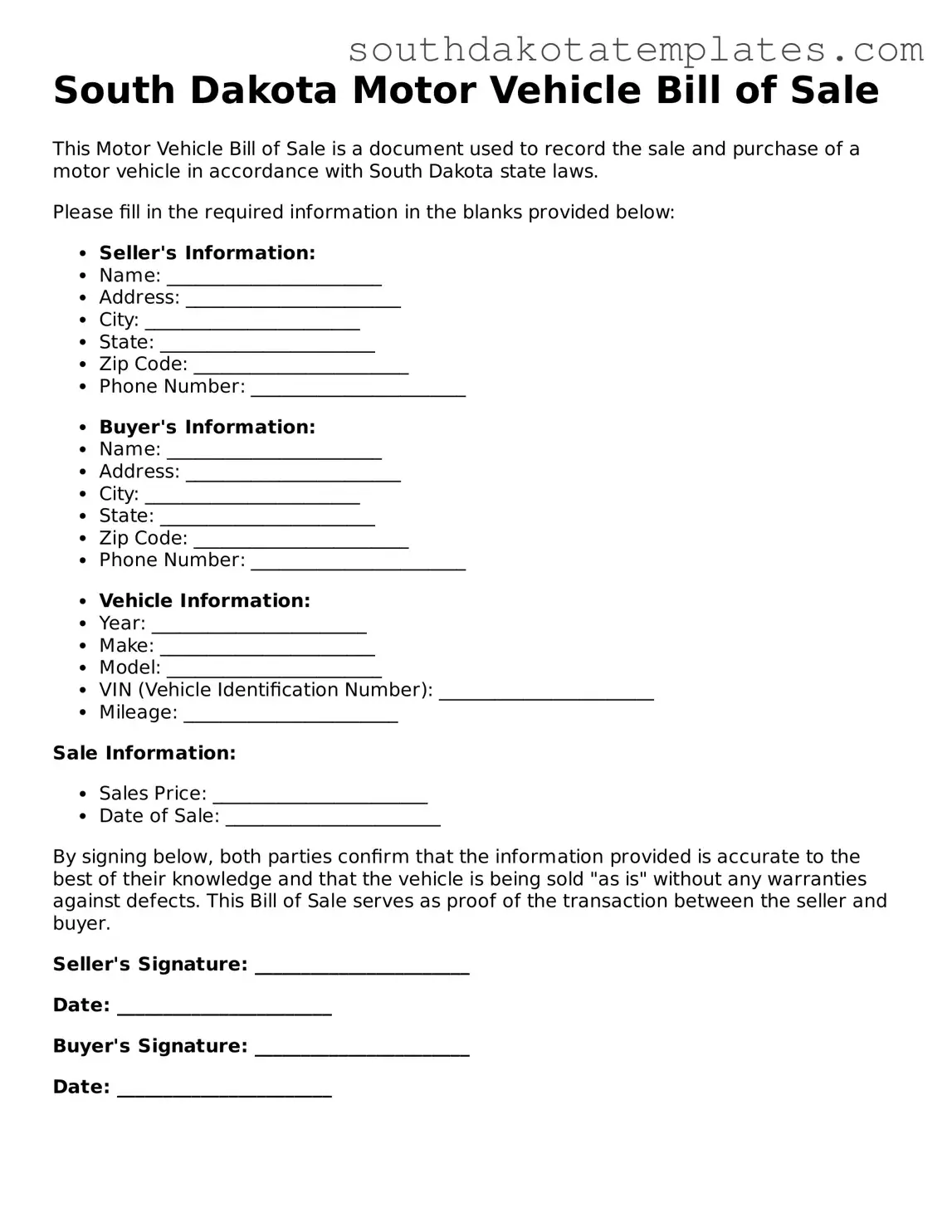Free South Dakota Motor Vehicle Bill of Sale Document
The South Dakota Motor Vehicle Bill of Sale is a legal document that records the transfer of ownership of a motor vehicle from one party to another. This form provides essential details such as the vehicle's identification number, make, model, and the sale price, ensuring a clear record for both the buyer and the seller. For those looking to complete a vehicle sale, filling out this form is a crucial step; click the button below to get started.
Get Motor Vehicle Bill of Sale
